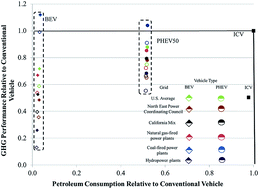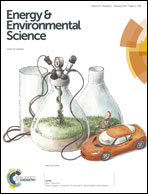The significance of Li-ion batteries in electric vehicle life-cycle energy and emissions and recycling's role in its reduction†
Abstract
Three key questions have driven recent discussions of the energy and environmental impacts of automotive lithium-ion batteries. We address each of them, beginning with whether the energy intensity of producing all materials used in batteries or that of battery assembly is greater. Notably, battery assembly energy intensity depends on assembly facility throughput because energy consumption of equipment, especially the dry room, is mainly throughput-independent. Low-throughput facilities therefore will have higher energy intensities than near-capacity facilities. In our analysis, adopting an assembly energy intensity reflective of a low-throughput plant caused the assembly stage to dominate cradle-to-gate battery energy and environmental impact results. Results generated with an at-capacity assembly plant energy intensity, however, indicated cathode material production and aluminium use as a structural material were the drivers. Estimates of cradle-to-gate battery energy and environmental impacts must therefore be interpreted in light of assumptions made about assembly facility throughput. The second key question is whether battery recycling is worthwhile if battery assembly dominates battery cradle-to-gate impacts. In this case, even if recycled cathode materials are less energy and emissions intensive than virgin cathode materials, little energy and environmental benefit is obtained from their use because the energy consumed in assembly is so high. We reviewed the local impacts of metals recovery for cathode materials and concluded that avoiding or reducing these impacts, including SOx emissions and water contamination, is a key motivator of battery recycling regardless of the energy intensity of assembly. Finally, we address whether electric vehicles (EV) offer improved energy and environmental performance compared to internal combustion-engine vehicles (ICV). This analysis illustrated that, even if a battery assembly energy reflective of a low-throughput facility is adopted, EVs consume less petroleum and emit fewer greenhouse gases (GHG) than an ICV on a life-cycle basis. The only scenario in which an EV emitted more GHGs than an ICV was when it used solely coal-derived electricity as a fuel source. SOx emissions, however, were up to four times greater for EVs than ICVs. These emissions could be reduced through battery recycling.


 Please wait while we load your content...
Please wait while we load your content...